
The Enchanting Pago Pago Harbor
Explore the scenic beauty and cultural richness of Pago Pago Harbor, a pristine tropical gem in American Samoa, perfect for nature lovers and culture enthusiasts alike.
Nestled in the heart of American Samoa, Pago Pago Harbor is a natural wonder that beckons travelers with its stunning beauty and rich cultural heritage. This deep-water harbor, surrounded by lush green mountains, offers an awe-inspiring view that is both tranquil and majestic. The harbor is not only a feast for the eyes but also a gateway to the vibrant life and traditions of the Samoan people. As you explore Pago Pago Harbor, you'll find a perfect blend of natural splendor and local charm. The area is dotted with picturesque villages, each offering a glimpse into the daily life of the islanders. Don't miss the chance to visit the local markets and savor the delectable Samoan cuisine. Fresh seafood, tropical fruits, and traditional dishes will tantalize your taste buds and offer a true taste of the islands. For nature enthusiasts, Pago Pago Harbor is a paradise. The surrounding waters are teeming with marine life, making it an excellent spot for snorkeling and diving. Hike through the lush rainforests, visit the National Park of American Samoa, and discover the unique flora and fauna that call this island home. Whether you're looking to relax on pristine beaches or embark on an adventurous journey, Pago Pago Harbor has something to offer every traveler.
Local tips in Pago Pago Harbor
- Visit early in the morning to catch the stunning sunrise over the harbor.
- Take a guided tour to learn about the local history and customs.
- Try the local seafood at the village markets for an authentic taste of Samoan cuisine.
- Bring comfortable hiking shoes for exploring the National Park of American Samoa.
- Snorkeling gear is a must to fully enjoy the vibrant underwater world.
The Enchanting Pago Pago Harbor
Nestled in the heart of American Samoa, Pago Pago Harbor is a natural wonder that beckons travelers with its stunning beauty and rich cultural heritage. This deep-water harbor, surrounded by lush green mountains, offers an awe-inspiring view that is both tranquil and majestic. The harbor is not only a feast for the eyes but also a gateway to the vibrant life and traditions of the Samoan people. As you explore Pago Pago Harbor, you'll find a perfect blend of natural splendor and local charm. The area is dotted with picturesque villages, each offering a glimpse into the daily life of the islanders. Don't miss the chance to visit the local markets and savor the delectable Samoan cuisine. Fresh seafood, tropical fruits, and traditional dishes will tantalize your taste buds and offer a true taste of the islands. For nature enthusiasts, Pago Pago Harbor is a paradise. The surrounding waters are teeming with marine life, making it an excellent spot for snorkeling and diving. Hike through the lush rainforests, visit the National Park of American Samoa, and discover the unique flora and fauna that call this island home. Whether you're looking to relax on pristine beaches or embark on an adventurous journey, Pago Pago Harbor has something to offer every traveler.
When is the best time to go to Pago Pago Harbor?
Iconic landmarks you can’t miss
Sadie's by the Sea
Discover the perfect blend of comfort and local culture at Sadie's by the Sea in Pago Pago, where stunning ocean views enhance your tropical getaway.

National Park of American Samoa
Explore the stunning landscapes, diverse wildlife, and rich cultural heritage of the National Park of American Samoa, a tropical paradise in the South Pacific.

Pago Pago International Airport
Experience the warm Samoan hospitality at Pago Pago International Airport, your gateway to the breathtaking beauty of American Samoa.
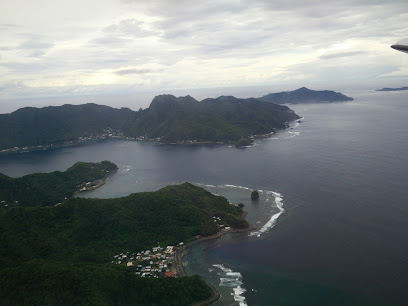
Tisa's Barefoot Bar
Savor the flavors of American Samoa at Tisa's Barefoot Bar, where local cuisine meets stunning coastal views in a relaxed, tropical setting.

DDW Restaurant
Experience the vibrant flavors of American Samoa at DDW Restaurant, where every meal is a celebration of local culture and culinary creativity.

National Park of American Samoa Visitor Center
Explore the National Park of American Samoa Visitor Center: Your gateway to stunning landscapes, rich culture, and unforgettable experiences.

Pago Pago Harbour
Experience the breathtaking beauty and cultural richness of Pago Pago Harbour in American Samoa, a must-visit destination for every traveler.

Milovales Burgers and Fish & Chips
Experience the best of American Samoa at Milovales Burgers and Fish & Chips, where every bite is a taste of local culture and flavor.

Veterans Memorial Stadium
Discover the vibrant community spirit and thrilling events at Veterans Memorial Stadium in Tafuna, a must-see destination for every traveler.

American Samoa Visitors Bureau (ASVB)
Explore the beauty and culture of American Samoa with expert guidance from the American Samoa Visitors Bureau, your travel companion in paradise.

Two Dollar Beach
Discover the tranquility and natural beauty of Two Dollar Beach in Avaio, Eastern District, where relaxation meets adventure in a stunning coastal paradise.

Sadies Thompson Inn
Discover the charm of Sadies Thompson Inn in Pago Pago, where breathtaking views and warm hospitality create the perfect getaway in American Samoa.
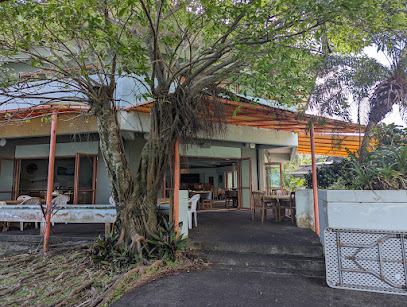
Jean P Haydon Museum
Explore the rich cultural heritage and history of American Samoa at the Jean P Haydon Museum, a captivating experience for every traveler.

Blunts Point Battery
Explore the historic Blunts Point Battery in American Samoa, where history meets stunning natural beauty in a captivating coastal setting.

OFFDAROCK TATTOOS AMERICAN SAMOA
Experience the artistry of OFFDAROCK Tattoos in American Samoa, where island culture meets personalized tattoo designs for every traveler.

Essential places to dine
Tisa's Barefoot Bar
Discover Tisa's Barefoot Bar: A tropical dining paradise where fresh seafood meets stunning ocean views in Alega's Eastern District.

DDW Restaurant
Discover authentic Pacific Island cuisine at DDW Restaurant in Utulei, where fresh ingredients meet breathtaking ocean views.

The Koko Bean Cafe
Discover the culinary delights at The Koko Bean Cafe in Nu'uuli - where flavor meets comfort in every bite.

Carl's Jr.
Experience the ultimate fast food delight at Carl's Jr., where mouthwatering burgers meet tropical charm in Pago Pago.

Cecilias Restaurant & Bar
Experience authentic Samoan flavors at Cecilia's Restaurant & Bar in Pago Pago – where culinary tradition meets breathtaking views.

Paradise Pizza
Discover exquisite pizza at Paradise Pizza in Pago Pago—where every bite takes you closer to culinary bliss amidst tropical charm.

Tropical Chicken and Pizza
Discover Tropical Chicken and Pizza in Pago Pago: A delightful fusion of local flavors awaits you at this charming eatery known for its delicious pizzas.

Oasis
Discover authentic Korean cuisine at Oasis in Tafuna – where every dish tells a story of flavor and tradition.

Manuia Restaurant
Discover authentic Korean flavors at Manuia Restaurant in Tafuna - a culinary journey awaits every food lover!

Nina’s Restaurant
Experience authentic Samoan cuisine at Nina's Restaurant in Tafuna - a culinary gem showcasing local flavors and warm hospitality.

Mama's Kitchen
Experience authentic Samoan flavors at Mama's Kitchen in Nu'uuli - a must-visit restaurant for every traveler seeking local culinary delights.

Goat Island Cafe
Experience authentic Samoan cuisine with stunning views at Goat Island Cafe in Utulei – where every meal tells a story.

‘ai Love Boba (east)
Discover a bubble tea paradise at ‘ai Love Boba in Leloaloa, where refreshing flavors meet delightful ambiance.

Emelio's Restaurant
Discover authentic Samoan flavors at Emelio's Restaurant in Pago Pago – a culinary delight amidst stunning landscapes.

Sunny's Restaurant
Discover authentic local flavors at Sunny's Restaurant in Nu'uuli’s Eastern District – where culinary tradition meets warm hospitality.

Markets, malls and hidden boutiques
Skyview Incorporated
Discover authentic local flavors at Skyview Incorporated, your go-to grocery store in Pago Pago, Eastern District, American Samoa.

Tedi Of Samoa
Explore Tedi Of Samoa, a lively shopping mall in Fagatogo that offers a unique blend of local culture and retail therapy in the heart of the islands.

Pago Supermarket Store
Explore local flavors and essentials at Pago Supermarket, your grocery destination in beautiful Pago Pago.
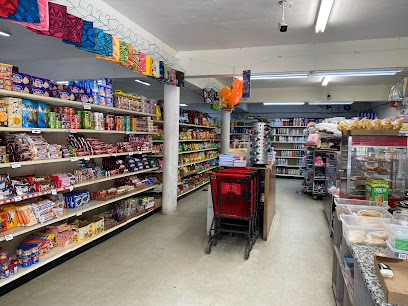
Amy's Gifts Shop
Explore the charm of Aua at Amy's Gifts Shop, where every unique gift tells a story of local culture and craftsmanship.

Downtown Ink Tattoo Studio
Experience the vibrant world of tattoo artistry at Downtown Ink Tattoo Studio, where creativity meets culture in the heart of Pago Pago.

Tutuila Store
Discover the charm of local culture at Tutuila Store, your go-to convenience store in Leloaloa, Eastern District.

MU INC
Explore MU INC in Faga'alu for unique local products, vibrant atmosphere, and a rich cultural experience that makes your visit unforgettable.

Shining Star Store
Discover the vibrant flavors of Pago Pago at Shining Star Store, your go-to grocery destination for local produce and culinary delights.

Tutuila Print
Explore the vibrant world of Samoan art and fashion at Tutuila Print, your go-to print shop in Pago Pago.

Happy World Inc.
Explore the vibrant fashion scene at Happy World Inc. in Pago Pago, where local culture meets contemporary style.

J&B Store
Experience the local charm at J&B Store in Pago Pago, a treasure trove of unique products and local culture.

Savers Samoa
Discover vibrant local fashion at Savers Samoa in Pago Pago, where unique styles meet Samoan culture for an unforgettable shopping experience.
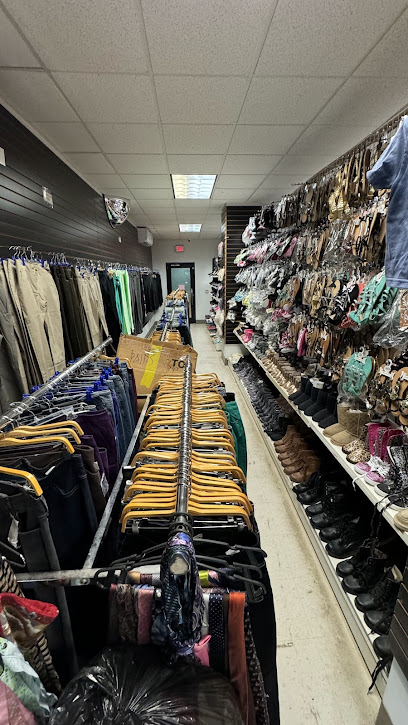
Trophies & Things
Discover handcrafted trophies and unique souvenirs at Trophies & Things in Fagatogo, where local artistry meets memorable keepsakes.

Manu’a Store
Discover local treasures and vibrant culture at Manu’a Store, Tafuna's premier shopping destination for tourists seeking unique souvenirs.

Paradise Gift
Explore Paradise Gift for exquisite jewelry that reflects the vibrant culture and artistry of Nu'uuli, a hidden gem for tourists.

Essential bars & hidden hideouts
Tisa's Barefoot Bar
Experience the unique flavors of the Pacific at Tisa's Barefoot Bar, where fresh ingredients and breathtaking views create an unforgettable dining experience.

Cecilias Restaurant & Bar
Discover the flavors of American Samoa at Cecilia's Restaurant & Bar, where local cuisine meets warm hospitality in the heart of Pago Pago.

Paradise Pizza
Discover the taste of Pago Pago at Paradise Pizza, where delicious flavors meet a warm, welcoming atmosphere.

Flying Fox Gastropub
Experience the culinary excellence of Flying Fox Gastropub, where local flavors and international cuisine come together in a vibrant setting.

Paradise Bar & Grill
Experience the vibrant flavors and lively atmosphere at Paradise Bar & Grill in Nu'uuli, your ultimate tropical getaway for food and fun!

Goat Island Cafe
Experience the flavors of the South Pacific at Goat Island Cafe, where fresh ingredients and stunning views create unforgettable dining memories.

Emelio's Restaurant
Savor the flavors of Pago Pago at Emilio's Restaurant, where local ingredients meet exceptional culinary artistry in a vibrant dining setting.
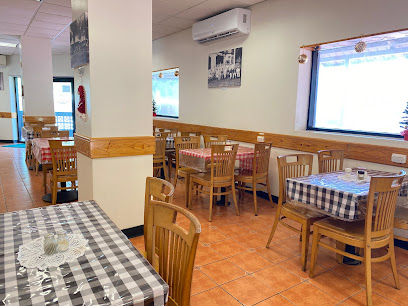
‘ai Love Boba (east)
Discover the refreshing flavors of ‘ai Love Boba in Leloaloa—your perfect stop for delicious boba drinks and quick bites in the Eastern District.

Moon Korean Restaurant
Experience the rich flavors of authentic Korean cuisine at Moon Korean Restaurant in Leloaloa, a culinary delight for every food lover.

Faga'alu Restaurant
Discover the vibrant flavors of Vietnam at Faga'alu Restaurant, where every dish is a culinary adventure in a welcoming atmosphere.

Fiafia Restaurant
Experience the rich and diverse flavors of Asia at Fiafia Restaurant in Fagatogo, a must-visit culinary destination for tourists.

Food Bar
Discover the vibrant flavors of Tafuna at Food Bar, a fast food haven offering delicious local dishes in a friendly atmosphere.
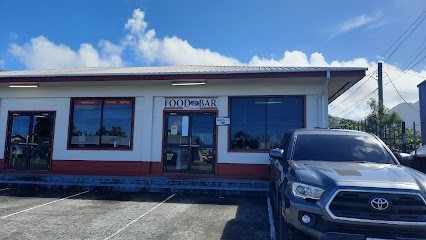
Good Vibes Bar And Grill
Experience family-friendly dining at Good Vibes Bar And Grill in Tafuna, where delicious food and a welcoming atmosphere come together.

Little Mexico
Discover authentic Mexican flavors at Little Mexico in Fagatogo, where vibrant dishes meet warm hospitality in a charming setting.

Matai Restaurant
Savor the rich flavors of American cuisine at Matai Restaurant in Fagatogo, where fresh ingredients meet a welcoming atmosphere.

Local Phrases about Pago Pago Harbor
-
- HelloTalofa
[Tah-lo-fah] - GoodbyeFa'amalie atu
[Fah-ah-mah-lee eh-to] - YesIoe
[Ee-oh-eh] - NoLeai
[Leh-eye] - Please/You're welcomeFa'amalie
[Fah-ah-mah-lee] - Thank youFa'afetai
[Fah-ah-feh-tai] - Excuse me/SorryFa'amalie
[Fah-ah-mah-lee] - How are you?O ai oe?
[O ah-ee oh-eh] - Fine. And you?Lelei. O a oute?
[Leh-leh-ee. Oh-ah oh-oo-teh] - Do you speak English?E iloa le fa'ailoa i le ʻo le mea faigofie?
[Ee ee-loh-ah leh fah-ai-loh-ah ee leh oh leh meh-ah fah-ee-go-fee-eh] - I don't understandE le mafai ona ou te malamalama
[Eh leh mah-fai oh-nah oh-oo teh mah-lah-mah-lah-mah]
- HelloTalofa
-
- I'd like to see the menu, pleaseE fia vaʻaia i le fa'amanuia, fa'amalie atu
[Eh fee-ah vah-ah-ee-ah ee leh fah-ah-mah-noo-ee-ah fah-ah-mah-lee eh-to] - I don't eat meatE leai ona ou te 'ai fia
[Eh leh-eye oh-nah oh-oo teh ah-ee fee-ah] - Cheers!Manuia!
[Mah-noo-ee-ah] - I would like to pay, pleaseE fia ona toe tu'u, fa'amalie atu
[Eh fee-ah oh-nah toe-eh too-oo, fah-ah-mah-lee eh-to]
- I'd like to see the menu, pleaseE fia vaʻaia i le fa'amanuia, fa'amalie atu
-
- Help!Tulou!
[Too-low] - Go away!Alu i le tasi!
[Ah-loo ee leh tah-see] - Call the Police!Fa'afesootai i le Fa'apitoa!
[Fah-ah-feh-soh-oh-tai ee leh fah-ah-pee-toh-ah] - Call a doctor!Fa'amalie i le foma'i!
[Fah-ah-mah-lee ee leh foh-mah-ee] - I'm lostOu te loku
[Oh-oo teh loh-koo] - I'm illOu te mati
[Oh-oo teh mah-tee]
- Help!Tulou!
-
- I'd like to buy...E fia ona fa'atau...
[Eh fee-ah oh-nah fah-ah-tow] - I'm just lookingOu te va'ai
[Oh-oo teh vah-ah-ee] - How much is it?O lea e leai seaga?
[Oh leh-ah eh leh-eye seh-ah-gah] - That's too expensiveE leai seai se mea faigaluega
[Eh leh-eye seh-eye seh meh-ah fah-ee-gah-loo-eh-gah] - Can you lower the price?O le mafai ona ou te fa'aitu
[Oh leh mah-fai oh-nah oh-oo teh fah-ah-ee-too]
- I'd like to buy...E fia ona fa'atau...
-
- What time is it?O le taimi e
[Oh leh tah-ee-mee eh] - It's one o'clockO le taimi e le tasi
[Oh leh tah-ee-mee eh leh tah-see] - Half past (10)I le aso e le lima
[Eh leh ah-so eh leh lee-mah] - MorningTaeao
[Tah-eh-ow] - AfternoonAfiafi
[Ah-fee-ah-fee] - EveningAso
[Ah-so] - YesterdayAnanafi
[Ah-nah-nah-fee] - TodayAso
[Ah-so] - TomorrowAso ma le po
[Ah-so mah leh poh] - 1Tasi
[Tah-see] - 2Lua
[Loo-ah] - 3Tolu
[Toh-loo] - 4Fa
[Fah] - 5Lima
[Lee-mah] - 6Ono
[Oh-no] - 7Fitu
[Fee-too] - 8Valu
[Vah-loo] - 9Iva
[Ee-vah] - 10Sefulu
[Seh-foo-loo]
- What time is it?O le taimi e
-
- Where's a/the...?O fea le ...?
[Oh feh-ah leh] - What's the address?O le fa'ailoa o le tuatusi?
[Oh leh fah-ai-loh-ah oh leh too-ah-too-see] - Can you show me (on the map)?O le mafai ona ou fa'ailoa mai (i le mapa)?
[Oh leh mah-fai oh-nah oh-oo fah-ai-loh-ah mah-ee ee leh mah-pah] - When's the next (bus)?O le a le taimi o le afea?
[Oh leh ah leh tah-ee-mee oh leh ah-feh-ah] - A ticket (to ....)Tiketi
[Tee-keh-tee]
- Where's a/the...?O fea le ...?
History of Pago Pago Harbor
-
Before European contact, Pago Pago Harbor was inhabited by the Samoan people for thousands of years. The harbor was a crucial part of their daily life, serving as a center for fishing, trade, and cultural activities. The Samoan people developed advanced navigation techniques and built large canoes called 'alia' to traverse the open ocean.
-
Pago Pago Harbor was first encountered by European explorers in the 18th century. The harbor caught the attention of the French explorer Louis-Antoine de Bougainville in 1768, followed by English explorer Captain James Cook in 1774. These early encounters opened the door for increased European interest in the region.
-
In the late 19th century, the strategic importance of Pago Pago Harbor became apparent to the United States. The harbor was ceded to the U.S. in 1878, and by 1900, it became an official American naval station. This transformed Pago Pago into a critical refueling and repair station for both merchant and military vessels navigating the Pacific Ocean.
-
During World War II, Pago Pago Harbor played a pivotal role in the Pacific theater. The harbor was fortified and used as a major base for the U.S. Navy. The construction of defensive installations and airstrips turned the harbor into a bustling hub of military activity, contributing significantly to the Allied war effort.
-
Pago Pago Harbor has faced its share of natural disasters, including the devastating tsunami of 2009. Triggered by an undersea earthquake, the tsunami caused significant damage to the harbor and surrounding areas. The event highlighted the resilience and strength of the local community as they rebuilt and recovered from the disaster.
-
Today, Pago Pago Harbor is a vibrant blend of historical significance and modern development. It serves as the main port for American Samoa, handling both commercial and recreational vessels. The harbor is also a popular destination for tourists, offering stunning views, rich cultural experiences, and a gateway to the natural beauty of the islands.
Pago Pago Harbor Essentials
-
Pago Pago Harbor is located on the island of Tutuila in American Samoa. The nearest international airport is Pago Pago International Airport (PPG), which is approximately 12 miles away from the harbor. Direct flights are available from Honolulu, Hawaii. Once you arrive at the airport, you can take a taxi or rent a car to reach the harbor. The drive typically takes around 20-30 minutes.
-
Within Pago Pago Harbor, taxis are readily available, and car rentals are also an option for those who prefer to explore at their own pace. For a more local experience, the 'aiga buses' (family buses) offer a colorful and affordable way to get around. They operate on flexible schedules and routes, so it's best to ask locals about the current routes and timings.
-
The official currency is the United States Dollar (USD). Credit cards are accepted in most hotels, restaurants, and larger shops, but it is advisable to carry some cash for smaller establishments and local markets. ATMs are available in Pago Pago, but they may not always be reliable, so it's a good idea to have enough cash on hand.
-
Pago Pago Harbor is generally safe for tourists. However, like any travel destination, it's important to take standard precautions. Avoid walking alone at night in unfamiliar areas and keep an eye on your belongings in crowded places. There are no specific high-crime areas targeting tourists, but staying vigilant and aware of your surroundings is always advisable.
-
In case of an emergency, dial 911 for immediate assistance. The local police station and medical facilities are available in Pago Pago. It is recommended to have travel insurance that covers medical emergencies. For minor health issues, there are pharmacies in the town where you can purchase over-the-counter medications.
-
Fashion: Do dress modestly, especially when visiting religious sites. Avoid wearing revealing clothing. Religion: Do respect local customs and traditions. Always ask for permission before taking photos of religious ceremonies. Public Transport: Do be respectful, and give up your seat to elderly passengers. Don’t eat or drink on public transport. Greetings: Do greet people with a friendly 'Talofa' (hello). A handshake is also common. Eating & Drinking: Do try local delicacies and accept food offerings graciously. Don’t refuse hospitality, as it is considered impolite.
-
To experience Pago Pago Harbor like a local, visit the local markets where you can buy fresh produce and traditional Samoan goods. Engage with locals, as they are often friendly and willing to share stories about the island's history and culture. Don’t miss visiting the Jean P. Haydon Museum to learn about the island’s history. For a unique experience, take a hike up Mount Alava for breathtaking views of the harbor and the island.
Trending Landmarks in Pago Pago Harbor
-
Sadie's by the Sea
-
National Park of American Samoa
-
Pago Pago International Airport
-
Tisa's Barefoot Bar
-
DDW Restaurant
-
National Park of American Samoa Visitor Center
-
Pago Pago Harbour
-
Milovales Burgers and Fish & Chips
-
Veterans Memorial Stadium
-
American Samoa Visitors Bureau (ASVB)
-
Two Dollar Beach
-
Sadies Thompson Inn
-
Jean P Haydon Museum
-
Blunts Point Battery
-
OFFDAROCK TATTOOS AMERICAN SAMOA
Nearby Cities to Pago Pago Harbor
-
Things To Do in Pago Pago
-
Things To Do in Aua
-
Things To Do in Tafuna
-
Things To Do in Leone
-
Things To Do in Lalomanu
-
Things To Do in Apia
-
Things To Do in Mulifanua
-
Things To Do in Salelologa
-
Things To Do in Savai'i
-
Things To Do in Fagamalo
-
Things To Do in Manase
-
Things To Do in Asau
-
Things To Do in Falealupo
-
Things To Do in Ha'ano
-
Things To Do in Foa










